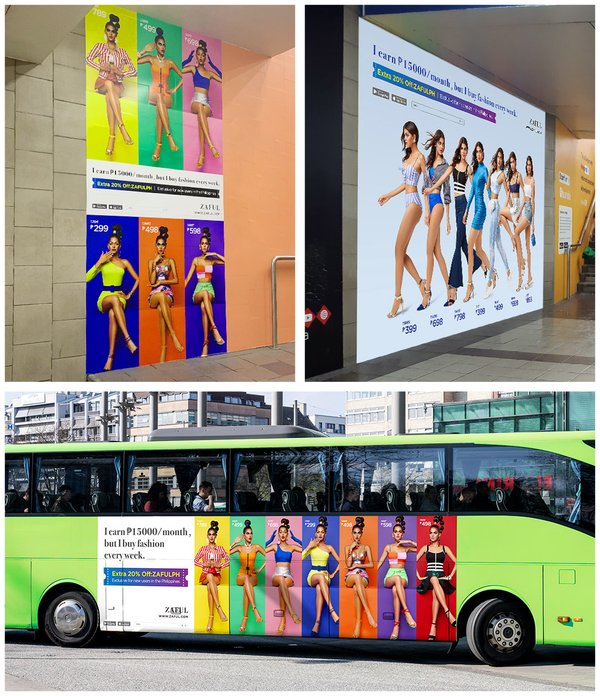Boost Your Company with Transit Advertising Philippines
Boost Your Company with Transit Advertising Philippines
Blog Article
Comprehending the Function of Transportation Advertising in Enhancing Brand Visibility and Customer Interaction
Transportation advertising has actually become a critical component in the advertising landscape, supplying distinct possibilities for brand names to elevate their exposure and engage customers effectively. With the capability to get to a captive and diverse audience during their day-to-day commutes, these advertising techniques are not simply concerning presence; they are concerning developing significant links with potential customers. As we explore the complex benefits and innovative methods within transit marketing, it ends up being important to consider exactly how these aspects jointly affect customer assumption and actions, increasing inquiries regarding their lasting effect on brand name loyalty.
Meaning of Transit Advertising
Transportation advertising and marketing describes the technique of advertising products, services, or brand names with ads placed around mass transit systems. This type of advertising encompasses a selection of positionings, including posters on buses and trains, electronic screens at transit terminals, and wraps on the exterior of lorries. It intends to get to a varied audience, taking advantage of on the high foot traffic connected with public transportation.
Transit advertising and marketing is purposefully placed to capture the focus of commuters, who frequently invest considerable time taking a trip or waiting. By integrating promotions into the day-to-day routines of individuals, brand names can produce a long-term impact and foster brand acknowledgment. The tool is specifically effective in city atmospheres, where public transport is a main setting of travel.
Furthermore, transit advertising and marketing can help with local targeting, enabling organizations to reach details demographics based upon transportation paths and terminal places. As city populations expand and making use of public transport rises, this advertising technique has actually gained importance as a crucial component of integrated advertising and marketing strategies. The dynamic nature of transportation advertising and marketing, combined with its capability to involve customers in a restricted atmosphere, emphasizes its value in contemporary advertising methods.
Advantages of Transportation Advertising And Marketing
The effectiveness of transit marketing lies in its capability to provide a multitude of advantages to brands seeking to improve visibility and involvement. One of the primary advantages is the comprehensive reach it uses; transportation advertisements can effectively target diverse demographics across urban areas, reaching both commuters and pedestrians alike. This wide direct exposure considerably increases brand awareness.
One more benefit is the high frequency of impressions. As transit cars follow well established paths and stop at several areas, they create recurring direct exposure that reinforces brand messages. This frequency promotes familiarity, which is vital in customer decision-making.
Transportation advertising and marketing is additionally cost-efficient contrasted to various other media platforms. Given its large reach and possibility for high perceptions, brands typically experience a reduced expense per thousand impressions (CPM), optimizing their advertising and marketing budget plan.
Additionally, transit ads can create a feeling of neighborhood connection. By straightening with neighborhood transit systems, brands can reverberate with regional target markets and cultivate a feeling of local satisfaction. This localized technique enhances brand name commitment and engagement, making transportation advertising an engaging option for companies intending to solidify their presence in the market.

Efficient Techniques for Transportation Campaigns
To maximize the influence of transit projects, brands need to take advantage of strategic preparation and execution customized to their target market. First, identifying the group qualities of the target market using public transit is crucial. This enables brands to develop individualized messaging that resonates with possible customers.
Next, choosing the right transit tools is essential. Whether using bus covers, metro posters, or digital screens, each tool has unique advantages that can boost visibility. For instance, vivid visuals on bus wraps can stand out, while electronic ads can be updated regularly to mirror timely promotions.
Additionally, incorporating a natural branding strategy across transit platforms makes sure uniformity and reinforces the brand's identity. Using attractive designs and unforgettable taglines will reinforce brand name recall amongst travelers.
Finally, timing is a crucial aspect in carrying out successful transit campaigns. Launching projects during top travel hours or local occasions can significantly boost exposure and engagement. By using these methods, brands can successfully harness the potential of transportation advertising and marketing, cultivating better recognition and link with their target audience. Eventually, a well-executed transit project can drive significant development in brand name exposure and more information customer engagement.

Measuring Effect and Involvement
In assessing the efficiency of transportation advertising campaigns, precise measurement of influence and engagement is essential for brand names looking for to enhance their advertising methods. Metrics such as reach, frequency, and perceptions offer foundational data to assess exposure. Analyzing these variables helps establish exactly how many prospective consumers are revealed to the ads during their day-to-day commutes.
Interaction can be additional determined through customer interactions, such as web site traffic, social networks mentions, and direct feedbacks to calls-to-action featured in the advertisements. Utilizing tools like QR codes or one-of-a-kind URLs can assist in monitoring of consumer habits straight connected to transit projects. Studies and feedback systems additionally serve as useful approaches to gather qualitative data on customer assumptions and recall of the advertisement.
Additionally, progressed analytics and attribution models can correlate transportation direct exposure with subsequent acquiring actions, offering insights into the return on financial investment. By using a comprehensive approach that integrates qualitative and measurable procedures, brand names can create a nuanced understanding of their transportation advertising and marketing impact. Ultimately, this data-driven method makes it possible for brand names to improve their projects, guaranteeing they reverberate properly with target market and enhance general brand exposure.
Study of Effective Campaigns
Successful transit ad campaign serve as engaging instances of exactly how efficient methods can raise brand exposure and involvement. Transit Advertising Philippines. One notable instance is the "I Love New york city" campaign, which changed the city's picture and attracted millions of tourists. By using train ads, billboards, and bus covers, the project created a strong, natural brand identity, resulting in a significant uptick in tourist and regional company patronage
Another excellent campaign is Coca-Cola's "Share a Coke" initiative, which leveraged transportation advertising to personalize the brand name experience. By featuring preferred names on advertising materials throughout different transit platforms, Coca-Cola fostered a much deeper emotional link with consumers, urging them to share check here their experiences on social networks.
Additionally, the "Got Milk?" project efficiently made use of public transport ads to get to a broad target market, strengthening the message of the relevance of milk in a well balanced diet plan. The project saw a measurable rise in milk usage in target demographics.
These study illustrate that when implemented thoughtfully, transportation advertising and marketing can considerably enhance brand presence, foster consumer involvement, and drive measurable results, demonstrating its crucial role in contemporary advertising and marketing techniques. - Transit Advertising Philippines
Verdict
To conclude, transportation advertising and marketing offers as a crucial device for enhancing brand exposure and cultivating consumer interaction. By making use of strategically positioned promotions within public transport systems, brand names can effectively reach varied target markets and enhance recognition via regular direct exposure. The implementation of targeted messaging and ingenious approaches better enhances the effect of transportation projects. Inevitably, the capacity to gauge engagement and analyze successful study highlights the efficiency of transit marketing in driving brand name commitment and customer interactions.
Transportation marketing has actually emerged as a crucial aspect in the advertising landscape, supplying distinct chances for brands to elevate their presence and engage customers properly.In addition, transportation advertising can facilitate localized targeting, permitting organizations to get to specific demographics based on transportation courses and terminal areas.In assessing the performance of transportation marketing campaigns, exact dimension of influence and interaction is crucial browse around these guys for brand names seeking to optimize their marketing methods.Effective transit marketing campaigns offer as compelling examples of exactly how reliable methods can raise brand name exposure and involvement.In conclusion, transportation advertising offers as a crucial tool for enhancing brand name presence and fostering consumer engagement.
Report this page